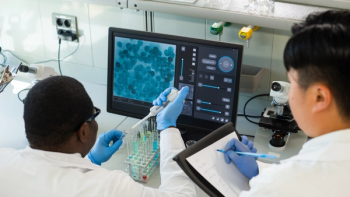
- Pharmaceutical Executive-11-01-2014
- Volume 0
- Issue 0
Pharma Science: It's Hard
Amid a resurgence in drug development for hard-to-treat conditions, the bigger question is whether the times are as good for the industry tasked with rendering basic science into therapeutically effective medicines.
THERE IS GROWING OPTIMISM about the potential of medicines to manage—even cure—a growing number of once untreatable conditions. That's the simple takeaway from Pharm Exec's annual review of what's coming up next from the industry's $60 billion pipeline of drugs in development. As contributing writer Josh Baxt notes in this month's cover feature, "immunotherapy is unlocking its promise as a safer way to fight cancer, we are seeing the first new treatments for heart failure since the 1980s, and gene therapy—the ultimate guarantor of personalized medicine—is finally approaching the clinic."
William Looney
Yes, it's a good time to be a patient. The larger question is whether the times are as good for the industry that accounts disproportionately for the task of rendering basic science into therapeutically effective medicines, able to perform consistently across a target patient population. The truth is there are some real tears in the patchwork gauze that binds a new entry to the commercial market. Many of these fissures lie hidden from public view, characterized only in vague terms like long lead times to market and high "sunk" costs. Yet, combined, they amount to a smoldering challenge to the current approach to drug development, a silent reminder of the necessity to embrace a different, perhaps more frugal model.
Here are a few "grand challenges" that drug developers in this new world of science face in moving a compound forward, from bench to bedside:
While time-is-money problems continue to rise in late-stage development, initial work in de-risking an asset for human trials is also slowing progress. One major challenge is the failure of traditional animal models to keep pace with the proliferation of testable drug candidates in certifying whether such candidates are likely to work safely when transposed to humans. No compound can progress toward regulatory approval without this essential benchmark being met, yet the predictive capacity of the "oncomouse" and other genotyped rodent models—their ability to yield an objective clinical response—is still quite low. In key areas like cancer it is getting lower as researchers attempt to develop models that can accurately mimic the contours of ever more complex tumors. The result is lengthy delays in progressing assets to crucial Phase IIb work and beyond: scientists say it's one of the less recognized roadblocks in that race to de-risk.
Next, consider the mounting complexities in the conduct of clinical trials, as a new generation of biologic drugs demand significant investments in pinpointing and recruiting the right patient candidates; appropriate monitoring, across multiple sites; data retention and evaluation; and extraordinary levels of physician supervisory engagement. Trials centered on the "one drug/one condition" methodology are becoming irrelevant. To satisfy the exacting expectations of trial reviewers coping with compounds that embody new science and an unconventional therapeutic approach, drugmakers seek to cover many bases at once, leading to internal process irregularities, data silos, and mid-course protocol adjustment snags that the Tufts Center for the Study of Drug Development (TCSDD) estimates costs the industry $6 billion a year in unnecessary spending.
What happens after approval may be even more significant. A nod from the FDA is only the beginning of a mounting series of regulatory obligations designed to evaluate the safety, efficacy, and "medical need" for a medicine under real-world clinical conditions. These often involve the preparation of large-scale studies in multiple locations—or, alternatively, among highly selective small subpopulations—that can go on for years, exceeding even the length of the drug's patent and costing many millions of dollars.
Unfortunately, industry has failed to highlight what it is taking on to comply with these post-approval mandates. The long time frames for this work may also mean study conclusions are less relevant to the current state of therapy, which can lead to pressures for withdrawal of the product from the market. And how many promising drug development leads will be sidelined due to the priority all this post-approval work gives to the perspective of the regulator, whose role in many jurisdictions is morphing from simple registration approval to gatekeeper on pricing and reimbursement as well? What was once predictable is increasingly uncertain: the days when approval boundaries were fixed and finite, as exemplified by the slogan "We won, so we're done," are clearly over.
Finally, there are the usual competitive challenges, although this time the threat may be extramural, led more by countries than companies. China, with its huge market size and scale, is beginning to demonstrate the capacity to develop innovative drugs at lower cost than its Western equivalents. Science is not going to get any easier, so finding ways to economize through process innovations may end up being the stitch that saves the industry.
William Looney Editor-in-Chief
Articles in this issue
about 11 years ago
EMA—a Pioneer Permanently At Bayabout 11 years ago
Outrage Grows Over Drug Pricingabout 11 years ago
Sales Reps and the New Commercial Organizationabout 11 years ago
Digital's Place in the Pharma Marketing MixNewsletter
Lead with insight with the Pharmaceutical Executive newsletter, featuring strategic analysis, leadership trends, and market intelligence for biopharma decision-makers.




